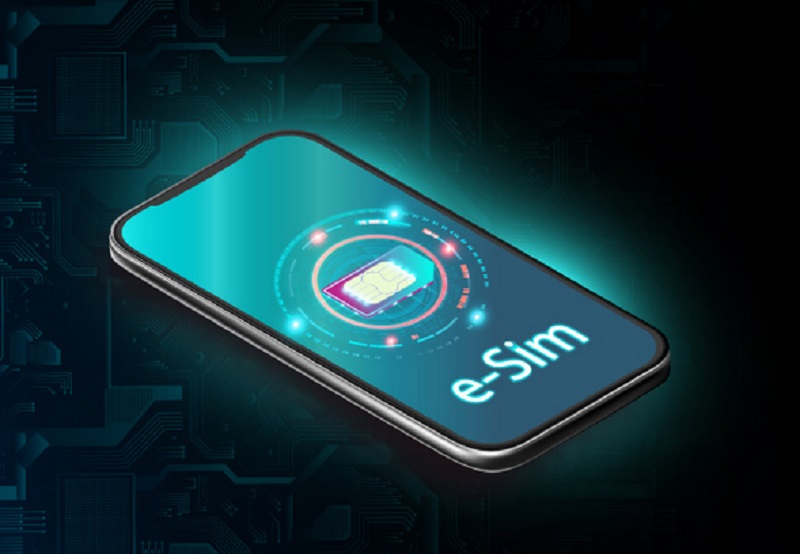Technology
Fortifying Digital Frontiers: Lessons and Strategies from the Ronin Network Hack

By Junaid Ijaya and Femi Babatunde
In the ever-evolving space of digital finance, where the currency of choice fluctuates as swiftly as the internet’s whims, the Ronin Network Hack of 2022 served as a stark reminder of the high stakes involved. Picture this: a playground for the modern gamer and financier, where fortunes in the form of digital tokens swing with every click—a universe where even virtual Axies (charming digital creatures) are worth millions. But amidst this digital gold rush, a nefarious plot unfolded, one that would see over $625 million vanish into the ether.
This was not just any heist. It was a breach that shook the very foundations of the blockchain gaming and decentralized finance (DeFi) sectors, highlighting vulnerabilities that went far beyond a mere loss of assets. The Ronin Network, designed as a fortress guarding the bustling economy of Axie Infinity, fell victim to an assault that was as sophisticated as it was devastating. This case study explores the intricate details of the attack, unravelling the layers of security that were bypassed and the subsequent shockwaves that rippled through the digital domain. Here, we explore why this incident stands out in the crowded field of recent cybersecurity breaches, serving as a critical lesson for stakeholders across the fintech landscape.
2.0 Understanding the Ronin Network
Have you ever been curious about what’s behind the surge of new gaming and financial platforms that are more than just fun but also potentially profitable? Meet blockchain technology, specifically Ethereum and its customized sidechain, Ronin, which have been game changers in this field of financial gamification.
Ethereum expands on the basic concept of blockchain, which traditionally supported transactions like those seen in Bitcoin. It introduces a platform where developers can create decentralized applications (dApps) through smart contracts. These are programs that automate agreements and transactions directly on the blockchain, making operations not only more efficient but also secure and transparent.
One of the most innovative applications of this technology is the Ronin Network, tailored specifically for Axie Infinity—a game that has become a standard-bearer for the “Play-to-Earn” model. In Axie Infinity, players engage in more than just gameplay; they participate in a mini-economy, breeding, raising, and battling creatures called Axies to earn cryptocurrency rewards. This setup was ideal for Ethereum’s capabilities, but it highlighted some limitations in terms of transaction costs and speeds. Ronin was developed to address these issues, providing a sidechain solution that supports quicker and cheaper transactions while maintaining robust security.
What Axie Infinity does is showcase how blockchain can bridge entertainment with real economic incentives, turning gaming into a platform not only for enjoyment but also for financial gains. This paradigm shift not only alters how games are played but also introduces a new way for players to engage in and understand economic systems in a digital era.
3.0 Details of the hack
When $625 million disappears from a network designed to be ultra-secure, it makes you wonder: How could this happen? Let’s peel back the layers of the Ronin Network hack to understand the technical nuances and the security lapses that allowed this dramatic heist to unfold.
The Ronin Network, an Ethereum sidechain developed to support the bustling digital economy of Axie Infinity, was breached on March 23, 2022. The attackers used a method known as “social engineering” to initiate the breach. They targeted the network’s validators, who are responsible for confirming transactions on the blockchain. By exploiting the trust and verification mechanisms between these validators, the hackers managed to execute their plan.
But how exactly did they get in? The breach was primarily facilitated through the compromise of private keys. In blockchain technology, private keys are akin to the most secure passwords. Possessing them essentially grants full control over the associated resources. In the case of Ronin, the attackers obtained access to five out of the nine validator nodes. According to reports, this was enough to form a consensus group, allowing them to authorize fraudulent transactions (Sky Mavis, 2022).
Here’s where it gets interesting: the attackers specifically targeted a backdoor in the gas-free RPC node, which was initially instituted to facilitate free transactions for convenience. Once they accessed the RPC node, they forged fake withdrawals. It’s like finding a spare key under the mat; once inside, they had free reign.
This method of attack raises a critical question: In an age where digital fortresses are supposed to be impregnable, how could such a simple oversight occur? The truth is, even the most secure networks can have vulnerabilities that are overlooked until exploited. The Ronin hack underscores the need for rigorous security protocols at every layer of network operations, especially on decentralized platforms where multiple validators are involved. It also highlights the paradox of blockchain security: the balance between user convenience and stringent security measures is a tightrope walk.
In the aftermath of the Ronin Network heist, the spotlight wasn’t just on the staggering $625 million that evaporated but also on the glaring security vulnerabilities it revealed. So, what were these weak spots, and why were they so critical in the scheme of this digital break-in?
First, let’s talk about the over-reliance on a limited number of validators. Ronin operates on a smaller consensus model with only nine validators—a stark contrast to Ethereum’s thousands. While this structure allows for faster and cheaper transactions, it inherently reduces the network’s resistance to certain types of attacks. Essentially, gaining control over a majority of these validators, as the hackers did, is akin to holding the master key to the network. It’s like if only nine people had the code to the city’s main vault; compromise a few, and you’re in.
Moreover, the use of a “gas-free RPC node” exposed a significant security flaw. Designed to ease transaction processes, this node became the hackers’ golden gate. It was supposed to be a convenient feature, but who thought convenience could cost so much? This feature was exploited to initiate unauthorized transactions without triggering standard security protocols. This kind of vulnerability begs the question: In trying to streamline and simplify, are we inadvertently lowering the drawbridge for attackers?
Another critical point was the insufficient security measures around the authentication processes for these validators. The fact that social engineering could be used so effectively to compromise key components of the network’s security architecture suggests a lapse in both technical safeguards and operational security training. It’s a classic case of underestimating the human element in cybersecurity. Could stronger, multifactor authentication and more rigorous security training for all personnel involved have thwarted the attackers?
Reflecting on these vulnerabilities exposes a broader issue in the blockchain space. As networks like Ronin seek to balance performance with decentralization, how much risk are they willing to accept? And more importantly, how can these networks bolster their defences without compromising the principles of decentralization that make blockchain technology so revolutionary? These are not just rhetorical questions but real challenges that need addressing if blockchain networks are to be trusted as the financial infrastructure of the future. Where do you think—where should the line be drawn between convenience and security in blockchain architectures?
Junaid is a cybersecurity engineer and cloud solutions architect and Femi is a technical product manager and quantitative researcher
Technology
Nigeria, Google in Talks for New Undersea Cable

By Adedapo Adesanya
The Nigerian government is in advanced talks with Google for a new undersea cable to strengthen the country’s digital connectivity and resilience.
The country wants to augment existing undersea links with Europe, said the chief executive of National Information Technology Development Agency (NITDA), Mr Kashifu Inuwa Abdullahi, as per Bloomberg on Tuesday.
Mr Inuwa said this was necessary at this time, calling Nigeria’s current reliance on cables that follow the same path “a single point of failure.”
Google earlier this year said it plans to expand its digital presence significantly in Africa with the development of four new strategic subsea cable connectivity hubs in the north, south, east, and west regions of the continent.
Already, Google is investing $2.1 million to accelerate Nigeria’s artificial intelligence (AI) growth, aiming to create one million digital jobs and bolster the country’s expanding technology economy.
This is aligned with Nigeria’s National AI Strategy, which is expected to play a meaningful role in the nation’s broader digital transformation. Projections indicate that AI could contribute up to $15 billion to Nigeria’s economy by 2030.
The fund will support partnerships with local organisations. To achieve these aims, the funding will support partnerships with local organisations working in digital skills development and cyber security.
The investment further signals global trust in Nigeria’s technology sector and underlines the nation’s role as a leader in Africa’s digital transformation. As new opportunities emerge, Google believes it support is set to help shape Nigeria’s economy and its place on the global technology stage.
Technology
Airtel Africa, SpaceX to Launch Starlink Direct-to-Cell Connectivity

By Modupe Gbadeyanka
An agreement for a satellite-to-mobile service that will benefit millions of people in Africa has been entered into between Airtel Africa Plc and SpaceX.
This service is through the introduction of Starlink Direct-to-Cell satellite connectivity across all the 14 markets of Airtel Africa that serve 174 million customers.
Through this partnership, Airtel Africa customers with compatible smartphones in regions without terrestrial coverage can have network connectivity through Starlink, which is the world’s largest 4G connectivity provider (by geographic reach).
The satellite-to-mobile service will begin in 2026 with data for select applications and text messaging.
This agreement also includes support for Starlink’s first broadband Direct-to-Cell system, with next-generation satellites that will be capable of providing high-speed connectivity to smartphones with 20x improved data speed. The rollout will proceed in line with country-specific regulatory approvals.
Airtel Africa is the first mobile network operator in Africa to offer Starlink Direct-to-Cell service, powered by 650 satellites to provide seamless connectivity to its customers in remote areas.
The partnership reinforces Airtel Africa’s commitment to bridge digital divide and offer seamless connectivity to its customers.
Airtel Africa and Starlink will continue to explore additional collaboration opportunities to further advance digital inclusion across the continent.
“Airtel Africa remains committed to delivering great experience to our customers by improving access to reliable and contiguous mobile connectivity solutions.
“Starlink’s Direct-to-Cell technology complements the terrestrial infrastructure and even reaches areas where deploying terrestrial network solutions are challenging.
“We are very excited about the collaboration with Starlink, which will establish a new standard for service availability across all our 14 markets,” the chief executive of Airtel Africa, Mr Sunil Taldar, said.
Also commenting, the Vice President of Sales for Starlink, Ms Stephanie Bednarek, said, “For the first time, people across Africa will stay connected in remote areas where terrestrial coverage cannot reach, and we’re so thrilled that Starlink Direct-to-Cell can power this life-changing service.
“Through this agreement with Airtel Africa, we’ll also deliver our next-generation technology to offer high-speed broadband connectivity, which will offer faster access to many essential services.”
Technology
Simplify Your Mobile Life with eSIM and Virtual Numbers

Managing phone numbers used to be a constant hassle. Between personal lines, work numbers, online registrations, and international travel, people often juggled multiple SIM cards, devices, or expensive roaming plans just to stay reachable. Today, eSIMs and virtual phone numbers offer a smarter way to handle communication. One device can manage multiple lines, switch between them instantly, and keep work and personal contacts separate—all without a physical SIM. For travelers, remote workers, and tech professionals, this setup offers efficiency, control, and flexibility that traditional SIM cards simply cannot match.
A virtual phone number is a digital line that exists independently of any physical SIM. Calls and messages are routed through the cloud, meaning the same number can function across multiple devices: smartphone, tablet, or computer. You can pick a local number in another country without actually being there, or maintain separate lines for freelance projects while keeping your personal number private. Virtual numbers also help protect privacy and streamline online activity. They are perfect for temporary projects, online sign-ups, or situations where you do not want to share your main number.
When paired with eSIM technology, virtual numbers become extremely convenient. Platforms like eSIM Plus let users download multiple numbers onto a single device, switch between them instantly, and manage personal and business lines without touching a physical SIM card. Travelers can maintain local numbers abroad, freelancers can manage multiple client contacts, and tech-savvy users gain complete control over their connectivity. eSIM Plus simplifies this process, allowing for seamless integration of digital numbers and minimizing the complications associated with traditional SIMs.
Businesses also find virtual numbers invaluable. They enable companies to create a local presence in multiple regions without the need for physical offices. Calls can be forwarded to employees anywhere, while integration with CRM tools allows monitoring and analytics of communication. For individuals, virtual numbers enhance privacy and simplify digital life. Whether signing up for online services, running a side business, or protecting personal information, virtual numbers provide flexibility and control that traditional numbers cannot offer.
Everyday Scenarios for Virtual Numbers
Virtual numbers are not just a tech gimmick—they solve real problems.
- International Travel: A traveler can maintain a local number in multiple countries, avoiding expensive roaming fees while staying reachable by family, friends, and colleagues.
- Remote Work and Freelancing: A consultant or freelancer can separate client communications from personal calls without carrying multiple phones. Multiple virtual lines can support different projects simultaneously.
- Privacy Protection: Individuals can use temporary numbers for online registrations, dating apps, or marketplace accounts, significantly reducing spam and unwanted contacts.
- Small Businesses and Startups: Companies can create local contact points in different regions, forward calls to employees, and integrate with communication software for better workflow management.
With eSIMs, managing these numbers becomes effortless. Instead of swapping physical SIM cards, users download the eSIM profile to their device, and virtual numbers become instantly available. This combination provides unparalleled flexibility for modern digital lifestyles.
How Virtual Numbers Work
Getting a virtual number is straightforward. Providers allow you to select a number online, link it to your smartphone or VoIP service, and manage it through an app. Common features include:
- Call forwarding to any device
- Text messaging and multimedia messaging
- Voicemail management
- Temporary numbers for short-term projects or verification purposes
When integrated with eSIM, the activation process is even faster. Download the eSIM profile to your device, and all your virtual numbers are ready to go. This approach is ideal for travelers, remote workers, and anyone managing multiple lines on a single phone without extra hardware.
Leading eSIM Providers
Several providers lead the market in combining eSIM technology with virtual numbers:
- eSIM Plus: Offers digital SIMs integrated with virtual numbers, allowing multiple lines on one device. Users can manage personal, business, and international numbers seamlessly, making it perfect for remote workers, travelers, and freelancers.
- Truphone: Provides global coverage with quick activation. Users can switch numbers without changing SIM cards, ideal for business professionals moving across regions.
- Airalo: Focused on international travelers, offering cost-effective eSIMs for data and voice in over 190 countries. Airalo simplifies connectivity for tourists and remote workers abroad.
- GigSky: Offers pay-as-you-go and subscription eSIM plans suitable for frequent travelers and digital nomads. GigSky supports multiple virtual lines on one device.
- Ubigi: Enterprise-focused, enabling companies to deploy eSIMs and virtual numbers to distributed teams. Employees maintain local numbers across regions without physical SIM swaps.
- Nomad: Travel-oriented eSIM provider supporting multiple virtual lines on one device. Ideal for digital nomads, remote professionals, and long-term travelers.
These services show how eSIMs and virtual numbers have evolved from niche tech to mainstream tools for managing modern communication efficiently.
Advantages Over Traditional Numbers
Virtual numbers have several key advantages over regular SIM-based numbers:
- Multiple lines on one device: Manage work, personal, and international numbers without carrying multiple phones.
- Privacy and control: Easily change or deactivate numbers for temporary projects, online registrations, or spam prevention.
- Global accessibility: Make and receive calls from anywhere without costly roaming charges.
- Integration with software: Works with VoIP apps, cloud platforms, and CRMs. Supports automated call routing, analytics, and communication tracking.
Traditional numbers cannot match this flexibility, efficiency, or convenience. Virtual numbers are built for modern workflows and digitally connected lifestyles.
Combining eSIM and Virtual Numbers
The combination of eSIMs with virtual numbers creates a flexible communication system. One device can handle multiple lines for home, work, or international use. Businesses can provide employees with local numbers in multiple regions without physical offices. Travelers can maintain home and foreign numbers without swapping SIM cards.
Consider a freelance consultant traveling across Europe: a virtual number in France, one in Germany, and a personal line—all on a single device. Clients reach local numbers, costs are minimized, and management happens from one interface. This setup highlights the efficiency eSIMs and virtual numbers provide.
Real-World Examples
- Remote Work Across Time Zones: An employee in Asia receives calls from North American clients using a local virtual number, avoiding international fees. eSIM profiles allow switching lines based on work hours.
- Maintaining Local Presence While Traveling: A business owner visiting multiple countries can maintain virtual local numbers. Clients call local numbers, but calls are forwarded seamlessly.
- Privacy and Online Security: Individuals use temporary virtual numbers for online registrations, reducing spam to their primary number.
These examples show why eSIMs combined with virtual numbers are essential for modern digital workflows.
The Future of Connectivity
With the rise of 5G, cloud communications, and AI-powered tools, eSIMs and virtual numbers will become increasingly integral to daily life. Expect tighter integration with business applications, enhanced security features, and instant switching between personal and professional lines.
For travelers, remote workers, and anyone managing multiple contacts, eSIMs paired with virtual numbers are more than a convenience—they’re a smarter, more efficient way to control communication in today’s digital world.
-

 Feature/OPED6 years ago
Feature/OPED6 years agoDavos was Different this year
-
Travel/Tourism9 years ago
Lagos Seals Western Lodge Hotel In Ikorodu
-

 Showbiz3 years ago
Showbiz3 years agoEstranged Lover Releases Videos of Empress Njamah Bathing
-

 Banking8 years ago
Banking8 years agoSort Codes of GTBank Branches in Nigeria
-

 Economy3 years ago
Economy3 years agoSubsidy Removal: CNG at N130 Per Litre Cheaper Than Petrol—IPMAN
-

 Banking3 years ago
Banking3 years agoFirst Bank Announces Planned Downtime
-

 Banking3 years ago
Banking3 years agoSort Codes of UBA Branches in Nigeria
-

 Sports3 years ago
Sports3 years agoHighest Paid Nigerian Footballer – How Much Do Nigerian Footballers Earn














